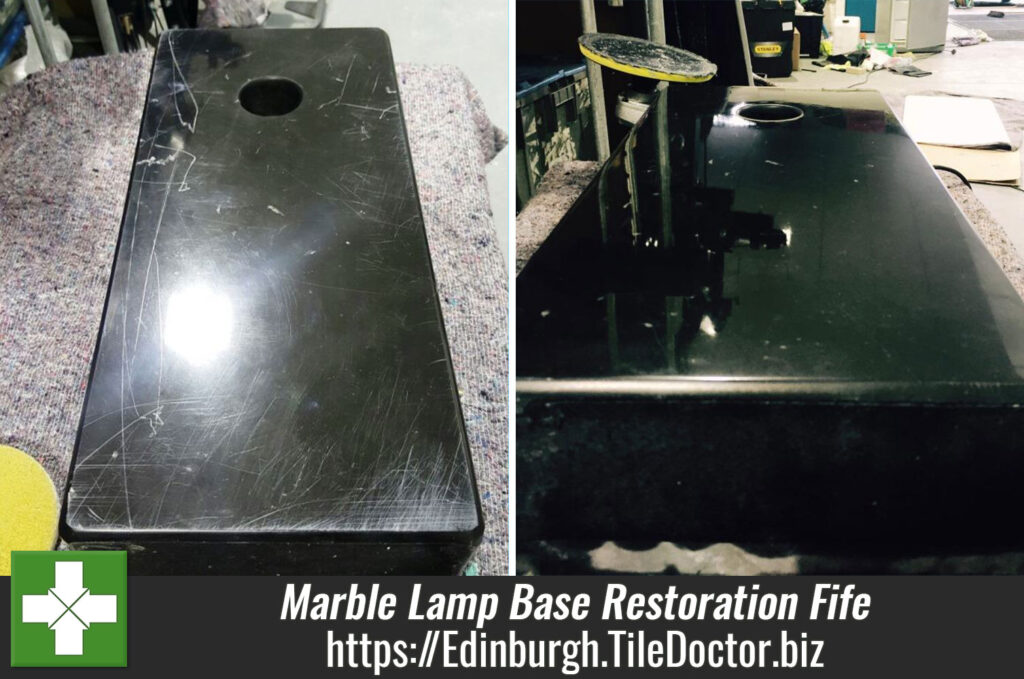At this property in Fife, I was asked to restore not a tiled floor, but in fact a solid black Marble lamp base. The lamp base was particularly by scratched and damaged as a result of a lack of care and consideration by a removal company. It’s a shame to see such a high-quality item suffer this kind of damage; nonetheless, I was keen to help with restoring it back to looking its best.


Restoring a Damaged Black Marble Lamp Base
Restoring the appearance of the Marble (and other high-end stones such as Limestone) commonly requires a process known as burnishing.
To begin, we applied to the base the first of a set of four six-inch burnishing pads. This pad, which had a Coarse grit, was fitted to a small handheld buffing machine and used to burnish the Marble with a little water for lubrication. I then worked my way through the pad system to apply Medium, Fine and Very Fine grit burnishing pads. The process gradually improved the appearance of the base, managing to remove some of the lighter scratches; however, it became clear that more work was required to fully complete the restoration.

The base was then given a final polish and sealed using Tile Doctor Shine Powder (a sealer in the form of a crystallising powder) to seal the stone and provide the extra gloss look shine and durable finish requested by the client.


Tile Doctor have the products, experience and equipment for tackling all sorts of problems including stone restoration, removing Limescale, repairing cracked tiles and grout and even stain removal with products such as Tile Doctor Reduxa which can lift Red Wine stains out of natural stone.